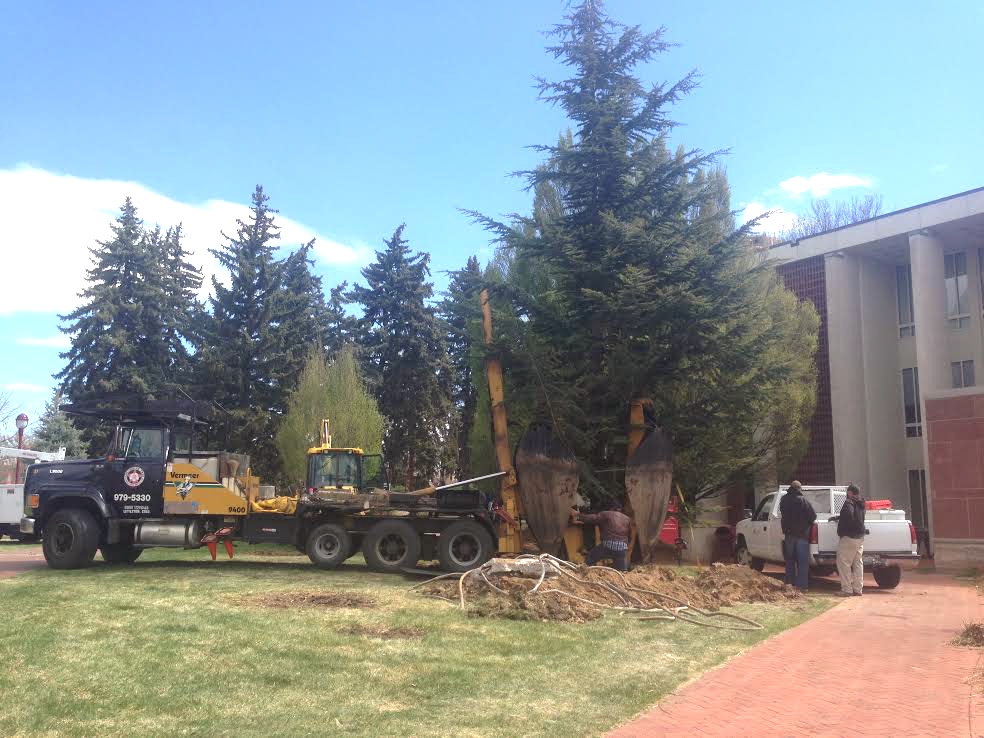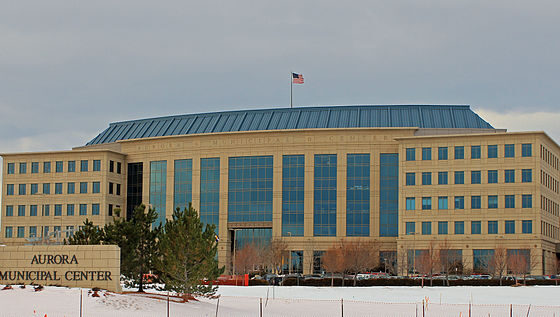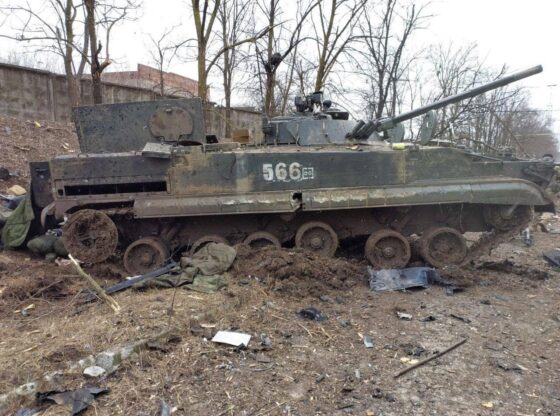Last Wednesday, April 30, the Chester M. Alter Arboretum transplanted the 40-foot Cedar of Lebanon from the west side of Cherrington Hall to the northeast side of Mary Reed in order to make way for the Anna and John J. Sie International Relations Complex, which will begin construction this summer. The transplant was the biggest the arboretum has ever done, according to Arboretum Curator Francesca Aguirre-Wong.
“There were a lot of students and faculty that stopped to watch and gawk during the transplant,” said Aguirre-Wong. “Since the transplant, the facilities guys have been staking the tree down and watering it to ensure its survival, and lots of students have stopped by to express their interest in the transplant and their hope for its survival.”
The Cedar of Lebanon is a species of cedar native to the mountains of the Mediterranean region. According to Aguirre-Wong, the tree was bought from a nursery in Oregon in 2003 when it was 12-feet tall. Now it is the second largest Cedar of Lebanon in the state of Colorado.
“Since the Cedar of Lebanon was a prized specimen in the collection, it was worth saving,” said Aguirre-Wong. “Plus, it was less money to move it than replace it with a new Cedar of Lebanon that would have to be special ordered and shipped.”
According to Aguirre-Wong, Columbine Tree, Inc. transplanted the tree using a tree-spading machine, which has four giant blades that encircle the tree, dive into the soil and lift the entire tree, including its roots and soil, out of the ground. Columbine Tree, Inc. had two people operating the machine and three DU grounds people assisting them. The machine dug a hole in the new designated location, dug up the tree and root ball, carried the tree to the new location and inserted it into the new hole. Aguirre-Wong said it took about two days to transplant the tree.
“There were some unexpected complications with the Cedar of Lebanon because the spade hit some old unused cement foundation,” said Aguirre-Wong. “Our grounds personnel spent three hours breaking out the concrete with a jackhammer so the spade could dig down into the soil.”
The Cedar of Lebanon has a dense root system that makes it ideal to dig up with a tree-spading machine. Aguirre-Wong said it is important to dig up as much of the root ball as possible so the tree has a better chance to survive in its new location. She added that the past and present location of the Cedar of Lebanon was also easy to get to with the tree-spading machine without destroying underground utilities or surrounding infrastructure.
The Cedar of Lebanon was one of seven trees the arboretum transplanted from the west side of Cherrington Hall. According to Aguirre-Wong, the trees were chosen because they were interesting specimens and their root balls were small enough to be captured by the spade. They were moved to various locations on campus depending on where there was space and where was accessible for the tree-spading machine.
The Persian Parrotia and Japanese White Pine were planted near Evans Chapel, while the Chinese Fringe Tree, White Fringe Tree and Sycamore Maple were planted near the Buchtel Memorial Tower. The Male Gingko was planted near Centennial Halls and the Female Gingko was planted near Craig Hall. Of the seven trees, the Japanese White Pine and Female Gingko were small enough to transplant manually, while the rest were transplanted by the machine.
“Right now is the ideal season to plant trees in Colorado,” said Aguirre-Wong. “Now the most important thing for these trees is to nurture the remaining roots with enough water so they can survive.”











